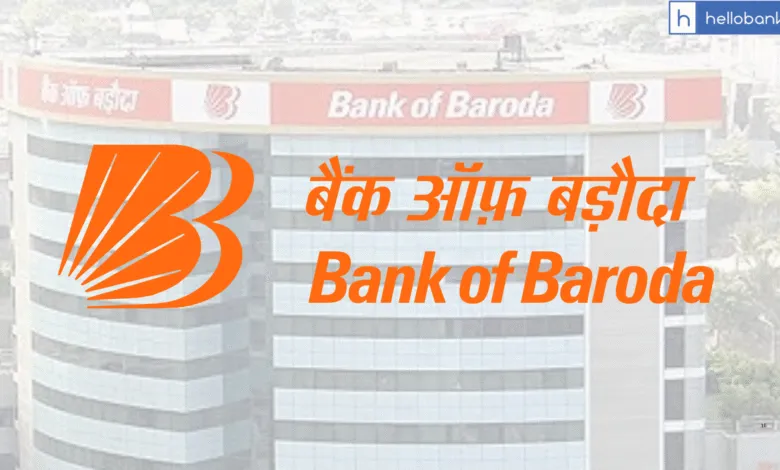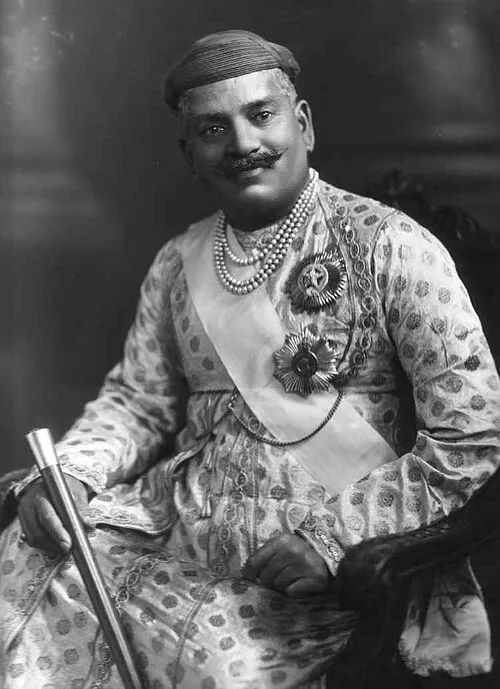Bank of Baroda: History, Timeline, Subsidiaries and All Details

| Get instant news updates: Click here to join our Whatsapp Group |
Bank of Baroda (BoB) is a Public sector bank headquartered in Vadodara, Gujarat, India. It is the third largest public sector bank in India after State Bank of India and Punjab National Bank.
The Bank was founded by Maharaja of Baroda, Sayajirao Gaekwad III, on 20 July 1908 in the princely state of Baroda, in Gujarat. The Government of India nationalized the Bank of Baroda, along with 13 other major commercial banks of India, on 19 July 1969 and the bank was designated as a profit-making public sector undertaking (PSU).

| Company type | Public |
|---|---|
| Founded | 20 July 1908 |
| Founder | Sayajirao Gaekwad III |
| Headquarters | Vadodara, Gujarat, India |
| Official Website | https://www.bankofbaroda.in/ |
History of Bank of Baroda
Bank of Baroda (BoB) was founded in 1908 by Sayajirao Gaekwad III, along with several prominent industrialists including Sampatrao Gaekwad, Ralph Whitenack, Vithaldas Thakersey, Lallubhai Samaldas, Tulsidas Kilachand, and N.M. Chokshi. In 1910, just two years after its founding, BoB opened its first branch in Ahmedabad.
Initially, the bank expanded within India. But after World War II, it started looking beyond Indian borders. In 1953, BoB opened international branches in Mombasa (Kenya) and Kampala (Uganda) to serve the large Indian communities living there.
The bank continued to grow overseas:
- In 1954, it opened another branch in Nairobi, Kenya.
- In 1956, a new branch was set up in Dar-es-Salaam, Tanzania.
- In 1957, BoB made a major move by opening a branch in London, which was a major hub for global finance and the British Commonwealth.
In 1958, BoB made its first acquisition in India by taking over Hind Bank, which was established in 1943 in Calcutta (now Kolkata).
1961–1965: Early Mergers and Expansion Abroad
- In 1961, Bank of Baroda (BoB) acquired the New Citizen Bank of India, strengthening its presence in Maharashtra. That same year, it also expanded internationally by opening a branch in Fiji.
- In 1962, a branch was opened in Mauritius.
- In 1963, BoB acquired Surat Banking Corporation in Gujarat.
- In 1964, it acquired Umbergaon People’s Bank in southern Gujarat and Tamil Nadu Central Bank in Tamil Nadu.
- In 1965, a new branch was opened in Guyana, South America. However, the same year, BoB lost its branch in Narayanganj (East Pakistan) due to the Indo-Pakistani War.
1967–1969: Losses Abroad and Nationalisation
- In 1967, BoB lost all three of its branches in Tanzania (Dar-es-Salaam, Mwanga, Moshi) after the Tanzanian government nationalised foreign banks.
- In 1969, the Indian government nationalised 14 major banks, including BoB.
- In Uganda, BoB formed a joint venture where it held a 51% stake and the government owned the rest.
1972–1975: Further Growth and Acquisitions
- In 1972, BoB acquired Bank of India’s operations in Uganda.
- In 1974, it opened branches in Dubai and Abu Dhabi.
- In 1975, BoB acquired two regional banks:
- Bareilly Corporation Bank (est. 1954) in Uttar Pradesh
- Nainital Bank (est. 1922) in Uttarakhand
- Over time, Nainital Bank expanded to five states, and BoB now owns 99% of its shares.
1976–1979: Expanding to Europe, US, and Africa
- In 1976, new branches were opened in Oman and Brussels (Belgium). The Brussels branch supported Indian diamond businesses operating in Antwerp.
- In 1978, BoB opened branches in New York and the Seychelles.
- In 1979, a branch was launched in Nassau, Bahamas.
1980–1988: International Presence and Joint Ventures
- In 1980, BoB opened a branch in Bahrain and a representative office in Sydney, Australia. It also partnered with Union Bank of India and Indian Bank to launch IUB International Finance in Hong Kong. Each held an equal share.
- In 1985, BoB entered a joint venture in Zambia, forming Indo-Zambia Bank with two other Indian banks and the Zambian government. BoB also set up an Offshore Banking Unit in Bahrain that year.
- In 1988, BoB merged with Traders Bank (est. 1947, Delhi), which had 34 branches. This was done under RBI orders.
1992–1996: Restructuring and Public Offering
- In 1992, BoB opened an Offshore Banking Unit in Mauritius but closed its Sydney office.
- In 1993, BoB took over the London branches of Union Bank of India and Punjab & Sind Bank as instructed by the RBI after both were affected by the Sethia fraud of 1987.
- In 1996, BoB entered the capital market with an Initial Public Offering (IPO). Despite this, the Government of India remained the majority shareholder, holding 66%.
1997–1999: New Ventures and Reorganization
- In 1997, BoB opened a branch in Durban, South Africa.
- In 1998, it bought out its partners in IUB International Finance, renaming it Bank of Baroda (Hong Kong). It also acquired Punjab Cooperative Bank in a rescue effort and started a new company, BOB Capital Markets, for the broking business.
- In 1999, BoB merged again with Bareilly Corporation Bank, which had 64 branches at the time.
- That same year, BoB turned its Guyana branch into a subsidiary, called Bank of Baroda Guyana.
- It opened a new branch in Mauritius and closed its Harrow branch in London.
Expansion and Acquisitions (2000s)
- 2000: Bank of Baroda set up a new bank in Botswana called Bank of Baroda (Botswana). It had three offices—two in Gaborone and one in Francistown.
- 2002: BoB upgraded its Hong Kong unit from a deposit-taking company to a Restricted License Bank. That same year, at the request of the Reserve Bank of India (RBI), BoB took over Benares State Bank (BSB).
- BSB had a long history, tracing back to 1871 as the treasury of Benares state.
- It had earlier acquired Bareilly Bank (1934) and Lucknow Bank (1913).
- This acquisition gave BoB an additional 105 branches.
- Also in 2002, BoB listed its Uganda unit on the Uganda Securities Exchange (USE).
- In 2003, BoB opened an Offshore Banking Unit (OBU) in Mumbai.
- 2004:
- BoB took over a failed Local Area Bank in south Gujarat.
- Re-entered Tanzania by opening a new subsidiary in Dar-es-Salaam.
- Opened representative offices in Kuala Lumpur (Malaysia) and Guangdong (China).
- 2005:
- BoB built a Global Data Centre in Mumbai to manage centralised banking operations across India and in 20 other countries.
- Opened another representative office in Thailand.
- 2006: Established an Offshore Banking Unit in Singapore.
- 2007 (Centenary Year):
- BoB’s business crossed ₹2.09 trillion, branches went past 2,000, and it had 29 million customers worldwide.
- In Hong Kong, BoB was granted a Full-Fledged Banking License, and its previous subsidiary became a full-fledged branch.
- 2008:
- Opened a branch in Guangzhou, China and another in Harrow, UK.
- Launched a joint venture life insurance company called IndiaFirst Life Insurance, with Andhra Bank and Legal & General (UK).
- 2009: Registered Bank of Baroda (New Zealand). As of 2017, it had 3 branches—two in Auckland and one in Wellington.
2010s – New Ventures and Mergers
- 2010:
- Received a commercial banking license in Malaysia to launch a new locally incorporated bank in partnership with Indian Overseas Bank and Andhra Bank.
- 2011:
- Opened an Electronic Banking Service Unit in Hamriya Free Zone, Sharjah (UAE).
- Added four new branches in Uganda, Kenya (2), and Guyana.
- Closed its Malaysia office, anticipating the launch of the new consortium bank.
- Got in-principle approval to upgrade its Australia representative office to a full branch.
- Took over financially troubled Memon Cooperative Bank, which had 15 branches and 225 employees in Maharashtra and Gujarat.
- 2012:
- Opened the India International Bank Malaysia (IIBM) in Kuala Lumpur, a joint venture with:
- BoB – 40%
- Andhra Bank – 25%
- Indian Overseas Bank – 35%
- The new bank aimed to open 5 branches in the first year and 15 within 3 years.
- Opened the India International Bank Malaysia (IIBM) in Kuala Lumpur, a joint venture with:
Mega Merger – BoB, Dena Bank, Vijaya Bank
- 17 September 2018: The Indian government proposed the merger of Dena Bank and Vijaya Bank with Bank of Baroda to create India’s third-largest lender.
- 2 January 2019: The Union Cabinet approved the merger.
- Dena Bank shareholders received 110 BoB shares (₹2 face value) for every 1,000 Dena shares.
- Vijaya Bank shareholders received 402 BoB shares for every 1,000 Vijaya shares.
- 1 April 2019: The merger became effective.
- It now had:
- 9,500+ branches
- 13,400+ ATMs
- 85,000 employees
- Serving 120 million customers
- Combined business of ₹14.82 trillion
- It now had:
- This was India’s first-ever 3-way bank merger.
Subsidiaries and Joint Ventures of Bank of Baroda
Domestic Subsidiary
- BOBCARD LIMITED (Formerly known as BOB Financial Solutions Limited)
- BOB Capital Markets Ltd.
- Baroda Global Shared Services Limited
- Nainital Bank Ltd.
- IndiaFirst Life Insurance Company Limited
- Baroda BNP Paribas Asset Management India Private Limited
- Baroda BNP Paribas Trustee India Private Limited (Formerly Baroda Trustee India Private Limited)
- BarodaSun Technologies Limited
Joint Venture Company (J.V.)
- India Infradebt Ltd.
- India International Bank Malaysia Berhad
Overseas Subsidiary
- Bank of Baroda Botswana Ltd
- Bank of Baroda (Kenya) Ltd.
- Bank of Baroda (Uganda) Ltd.
- Bank of Baroda (Guyana) Inc.
- Bank of Baroda (New Zealand) Ltd.
- Bank of Baroda (Tanzania) Ltd.
- Bank of Baroda (UK) Ltd.
Overseas Associate
- Indo-Zambia Bank Ltd. (Lusaka)
